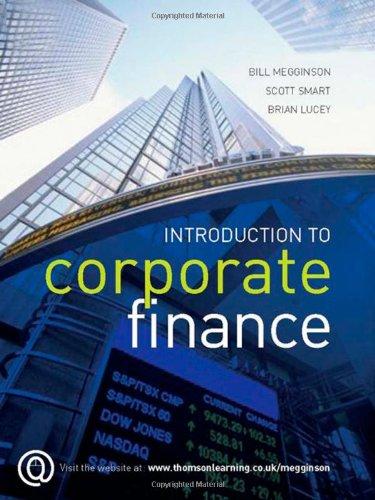
Question 5. (20 points) You are a mean-variance investor. You invest your savings into two available funds, S&P 500 Index fund and Risk-free T-bill fund. Until very recently, you have chosen to hold the following optimal portfolio, having relied on your estimation about annual expected returns and standard deviations given below as well. Asset Allocation Expected return Standard Deviation weights S&P 500 Index Fund 60% 8% 20% Risk-free Treasury Fund 40% 2% 0 You are now making a different expected return estimation for the upcoming year, although you are not changing your estimation about standard deviation: Asset Expected return S&P 500 Index Fund 12% Risk-free Treasury Fund 2% You now get a new set of optimal allocation weights given this new estimation for the upcoming year. You currently have a total $1.5 million invested in the two funds. A) (10 points) what allocation weights would you divide between the two funds? (write down the weights in percent) S&P 500 Index Fund Risk-free Treasury Fund Total 100% B) (5 points) What is the expected dollar profit on your overall portfolio over the next year? (The unit should be in dollars; profit is the net payoff from an investment) C) (5 points) What is the standard deviation of the dollar profit on your portfolio over the next year? (The unit should be in dollars; profit is the net payoff from an investment) Question 5. (20 points) You are a mean-variance investor. You invest your savings into two available funds, S&P 500 Index fund and Risk-free T-bill fund. Until very recently, you have chosen to hold the following optimal portfolio, having relied on your estimation about annual expected returns and standard deviations given below as well. Asset Allocation Expected return Standard Deviation weights S&P 500 Index Fund 60% 8% 20% Risk-free Treasury Fund 40% 2% 0 You are now making a different expected return estimation for the upcoming year, although you are not changing your estimation about standard deviation: Asset Expected return S&P 500 Index Fund 12% Risk-free Treasury Fund 2% You now get a new set of optimal allocation weights given this new estimation for the upcoming year. You currently have a total $1.5 million invested in the two funds. A) (10 points) what allocation weights would you divide between the two funds? (write down the weights in percent) S&P 500 Index Fund Risk-free Treasury Fund Total 100% B) (5 points) What is the expected dollar profit on your overall portfolio over the next year? (The unit should be in dollars; profit is the net payoff from an investment) C) (5 points) What is the standard deviation of the dollar profit on your portfolio over the next year? (The unit should be in dollars; profit is the net payoff from an investment)







